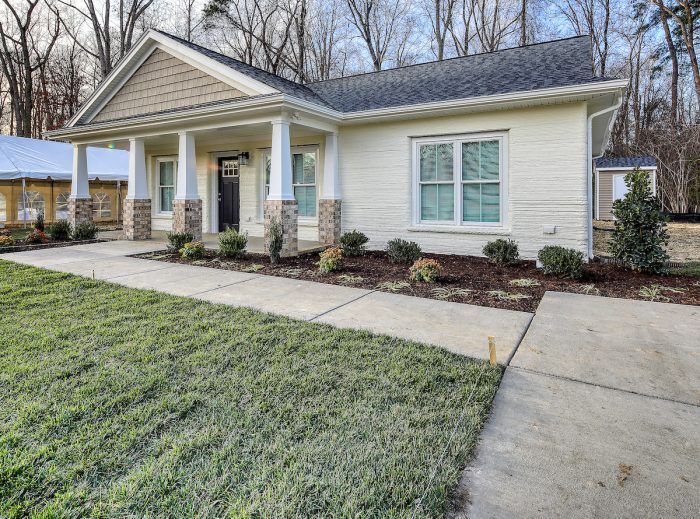3D-Manufactured Milestone
Habitat's first 3D-printed home east of the Mississippi River is delivered.

The 3D-printing concrete company Alquist and the Peninsula and Greater Williamsburg chapter of the nonprofit home-builder Habitat for Humanity in Virginia achieved a major milestone this past December, as the team delivered the first Habitat for Humanity 3D-printed home east of the Mississippi River.
The 3D technology, which dates back to the 1980s, literally prints layers of a home using concrete, making up the walls, foundation, and footing of a house. This specific project, located in Williamsburg, Va., is a three-bedroom, two-bathroom, 1200-sq.-ft. home., and it took a mere 28 hours to complete the exterior.

“The only difference between [the 3D-printed home] and a stick-build home is that the exterior walls are concrete,” said Alquist CEO and Founder Zachary Mannheimer in a Pro-Talk podcast with Fine Homebuilding senior editor Patrick McCombe. “Everything else about the home is identical to a stick-build home. We still need to hire local electricians, plumbers, roofers, etc.”
Mannheimer said that the 3D-printing technique not only saves time, it also helps cut costs. Although it’s not a dramatic amount of savings at the moment, Mannheimer said that by using concrete for the walls, they saved an estimated 15% per sq. ft. in building costs.
“We know we saved about 15%, and we did that in four ways,” said Mannheimer. “In terms of time, it took us 22 hours to print the exterior walls. Material: the concrete was less expensive than if we were going to use lumber. Labor: we only needed between two and four humans to operate the printer when we would’ve had a framing crew of between six and 12. We shaved off about three to four weeks of construction time when we built that house by using our 3D printer. The fourth savings is that concrete walls uses 50% less utility and energy costs than a stick-build home.”

The owner, Virginia local April Stringfield, purchased the home through Habitat’s Homebuyer Program. The program allows the newly constructed homes to be purchased with a zero-interest-equivalent 20- to 30-year mortgage. Mortgage payments on the home will be 30% or less of the buyer’s income, and it includes homeowner’s insurance as well as real estate taxes.
The home is also EarthCraft-certified, which certifies that homes are sourced, constructed, and designed to reduce environmental impacts. Additionally, EarthCraft homes save homeowners about 30% on their energy bills in relation to comparable buildings that use standard construction methods.
Alquist and Habitat hope that this milestone will pave the way to help solve the nation’s attainability crisis, and allow the construction of homes to be much more efficient when it comes to cost and job times.
To learn more about this home, or Alquist and its 3D-building techniques, you can listen to the Pro-Talk podcast featuring Mannheimer below.
Photos courtesy of Consociate Media
RELATED STORIES
- Will 3D Printers Replace Homebuilders?
- Where Concrete is King
- Community Effort Makes Homes More Affordable
Fine Homebuilding Recommended Products
Fine Homebuilding receives a commission for items purchased through links on this site, including Amazon Associates and other affiliate advertising programs.

All New Bathroom Ideas that Work

A Field Guide to American Houses

All New Kitchen Ideas that Work






















